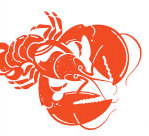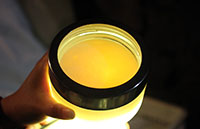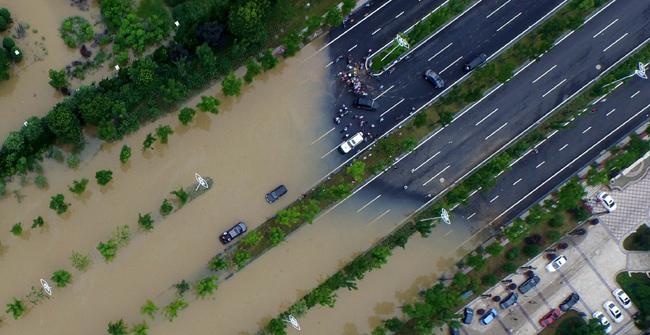Claws for thought
Updated: 2015-07-24 08:11
By Sun Jiahui(China Daily Europe)
|
|||||||||||
Crayfish: A tasty invader that is destroying ecosystems in China
小龙虾作为入侵物种带来的生态灾难,不是中国的广大吃货能解决的
With summer here, freshwater crayfish - known in Chinese as xiaolongxia, or little lobsters - will be scuttling their way to tables nationwide.


The culinary popularity of crayfish, cooked with heavy seasoning and enjoyed with beer on a hot summer evening, swept the Chinese mainland in the late 1990s, and today it continues to be known for its pleasant taste, availability and lobster-like appearance.
Disturbingly, however, the shellfish is more than just a delicacy: It is an invasive and destructive species.
When the phrase "invasive species" started to make its way into newspapers, the Chinese people began to figure out that the crayfish is a pest that needs to be dealt with (or at least eaten with a vengeance). Unfortunately, at this time, rumors started to swirl about this strange creature to scare consumers away: Some claimed it was actually a type of worm, while others said it only lived in dirty water and fed on garbage.
The prize for most outlandish theory goes to those who claimed that the crayfish was a conspiracy - a genetically modified species left by the Japanese army who used them as a weapon to dispose of dead bodies (despite the discovery of the DNA double helix coming far too late for that, in 1953).
These groundless rumors garnered national attention, but the real harm these creatures cause is still lost on many people.
Crayfish, or more specifically the species known as Procambarus clarkii, are native to the southeastern United States, most commonly found in warm freshwater areas, such as slow-flowing rivers, marshes, reservoirs and irrigation systems. In 1927, crayfish made their way from Hawaii to Japan as food for bullfrogs, eventually making their way to China and landing in Nanjing in 1929. It wasn't until the 1960s that the crayfish became known as a source of food.
As with many invasive species, it was promoted as an economically valuable food with little or no regard for the environmental consequences. This small, seemingly insignificant creature has been wreaking havoc on farms and ecosystems around China ever since.

A hardy species, the crayfish grows and breeds quickly, even in seasonal waters, capable of surviving dry spells, saltwater, and low oxygen content in water. As it does so, it feeds on a wide range of aquatic plants and fish.
Not only does it throw aquatic ecosystems into disarray, but it also plays a destructive role with its burrowing. It damages water tables and decreases the stability of small dams. For rice farmers, the crayfish seems to be an almost insurmountable foe.
With a history of more than 1,300 years, the rice terraces of Yuanyang county in Yunnan province, a World Cultural Heritage site, are now under threat from this tiny, edible freshwater crustacean. The crayfish there can be found up to 1 meter under the soil, causing the terraced fields to leak water and making the growing of crops nearly impossible.
According to Hangzhou Daily, crayfish in Yunnan have destroyed about 2,000 hectares of rice fields, which are now entirely full of crayfish holes and are useless for growing rice. The local government has allocated 1.1 million yuan ($176,880; 163,600 euros) a year since 2012 to exterminate 3.7 million crayfish annually. The authorities have also issued rules stating that crayfish farming is not allowed in terraced fields, and that no crayfish should be sold.
All of this was the result of a single migrant worker to Yunnan who made the unfortunate decision to raise them on his rice field for a bit of extra cash.
Overall, China seems ill-equipped to deal with invasive species such as the crayfish. Indeed, Liu Wanxue at the Center for Management of Invasive Alien Species says China did not begin in-depth research into invasive species until 2000.
"In the last century, we didn't have invasion biology," he says. "What we did was just pest control in general. It wasn't until 2002 that ... invasive species research got off the ground in China."
While academic achievements in monitoring and risk evaluation have made great strides, the practical prevention and control methods remain relatively archaic, including the use of pesticides and the introduction of predators.
China's biodiversity is suffering an invasion of an estimated 544 nonindigenous species. According to Liu, of the 100 most threatening invasive species in the world, 51 can be found in China. He also says invasive species cause estimated losses of more than 200 billion yuan a year.
Considering crayfish, it is no surprise the authorities have concentrated efforts on the economic effects of the crustacean rather than the ecological impacts. In some east coast areas, fish farms use a lot of chemical pesticides to eliminate crayfish, causing no end of havoc to the ecosystem.
What is worse, some of these poisoned crayfish make their way to the market. The lack of clear and effective laws and regulations in this field is cause for concern. But the good news, according to Liu, is that the Ministry of Agriculture is planning to propose more specific measures for the management of alien invasive species, which will hopefully be passed this year.
But this is just the first step toward long-term, effective solutions. For now, the responsibility falls to the Ministry of Agriculture as well as the State Forestry Administration and the Ministry of Environmental Protection.
As always, there is work to be done on the education side of things, too. Attitudes toward freshwater crayfish and other invasive species are increasingly polarized; the mere mention of them strikes fear in people, while conspiracy theories and rumors continue to flourish. There are even those who think the problem can be solved by simply eating a way out of this mess.
The problem of invasive species is a serious one, a problem that garners more sensational headlines than practical solutions: In 2012, a man in the Guangxi Zhuang autonomous region got a chunk taken out of his hand by a piranha; the silverleaf whitefly caused a total crop failure in Shaanxi province in 2010; the Canadian goldenrod plant eliminated more than 30 species in Shanghai alone; and the water hyacinth has killed untold numbers of fish and has even grown so thick as to obstruct navigation.
There is no easy solution to invasive species, but the authorities must concentrate their efforts on protecting ecosystems, stopping the influx of invasive species, and dealing with the already damaging species safely and with care.
Courtesy of The World of Chinese, www.theworldofchinese.com
The World of Chinese
(China Daily European Weekly 07/24/2015 page27)
Today's Top News
Financial Times sale – the deal no-one saw coming
Astronomers discover most Earth-like planet yet
Deficit hits $104b in first half
Warriors star in lakeside opera spectacular
Greek parliament passes crucial bailout bill
Ministry: No date set for nationwide two-child policy
'Spartans' detained by Beijing police for disturbing order
Shanghai says no futures trading manipulation in FTZ
Hot Topics
Lunar probe , China growth forecasts, Emission rules get tougher, China seen through 'colored lens', International board,
Editor's Picks

|

|

|

|

|

|






